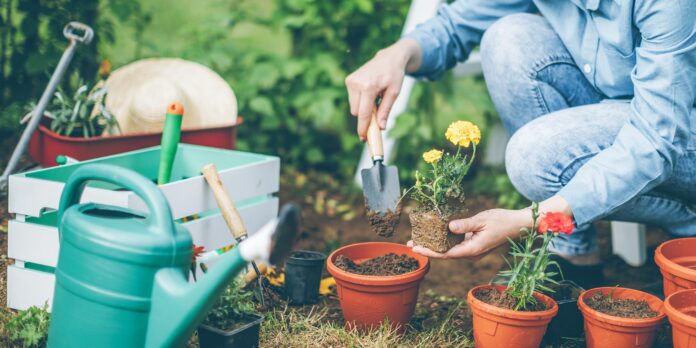Growing your own vegetables and herbs can be a rewarding and sustainable way to enhance your culinary creations and foster a connection with nature. With careful planning and a little patience, even beginners can cultivate a thriving garden. This article will provide a comprehensive guide to starting your own vegetable and herb garden, covering essential topics such as garden planning, soil preparation, plant selection, and maintenance.
- Planning your garden
Before breaking ground, consider the following aspects of garden planning:
- Space: Assess the space you have available for your garden, whether it’s a backyard plot, a balcony, or a windowsill. This will help determine the size and scope of your garden.
- Sunlight: Most vegetables and herbs require at least six hours of direct sunlight per day. Observe your intended garden space throughout the day to ensure it receives adequate sunlight.
- Garden layout: Design your garden layout with an emphasis on maximizing space, ensuring proper sunlight exposure, and providing easy access for maintenance. Raised beds, containers, and vertical gardening are all space-saving options.
- Preparing the soil
Healthy soil is crucial for successful vegetable and herb gardening. Consider the following steps for soil preparation:
- Soil testing: Test your soil to determine its pH level, nutrient content, and potential contaminants. Home testing kits are available, or you can contact your local extension office for assistance.
- Soil amendment: Based on your soil test results, add organic matter, such as compost or well-aged manure, to improve soil structure, fertility, and drainage.
- Mulching: Apply a layer of organic mulch, such as straw or shredded leaves, to conserve moisture, suppress weeds, and maintain soil temperature.
- Selecting plants
Choose vegetables and herbs that align with your culinary preferences, gardening space, and climate:
- Climate-appropriate plants: Select plants that are well-suited to your region’s growing conditions. Consult your local extension office or gardening center for recommendations.
- Beginner-friendly options: Start with easy-to-grow vegetables and herbs, such as lettuce, tomatoes, zucchini, basil, and parsley.
- Planting times: Familiarize yourself with the appropriate planting times for each plant, as some require cool temperatures (e.g., spinach, peas), while others prefer warm conditions (e.g., tomatoes, peppers).
- Planting your garden
Follow these planting guidelines for a successful vegetable and herb garden:
- Seeding: Some vegetables and herbs can be directly sown into the garden (e.g., beans, carrots), while others benefit from being started indoors (e.g., tomatoes, peppers). Follow the seed packet instructions for proper planting depth and spacing.
- Transplanting: When transplanting seedlings or nursery-bought plants, gently loosen the root ball, dig a hole slightly larger than the root ball, and position the plant at the same depth it was in its original container.
- Watering: After planting, water the soil thoroughly to establish good root-to-soil contact.
- Maintaining your garden
Proper garden maintenance is essential for a thriving vegetable and herb garden:
- Watering: Keep the soil consistently moist but not waterlogged. As a general rule, most gardens require about 1 inch of water per week, either from rainfall or supplemental irrigation.
- Fertilizing: Apply an organic fertilizer or compost tea every 4-6 weeks during the growing season to provide essential nutrients.
- Pest control: Inspect plants regularly for signs of pests and diseases. Use organic pest control methods, such as introducing beneficial insects, using insecticidal soap, or removing affected plant parts.
- Pruning and harvesting: Regularly prune and harvest your herbs to encourage bushy growth. Harvest vegetables at
- their peak ripeness for the best flavor and nutritional value. Be gentle when harvesting to avoid damaging the plant.
- Seasonal care
To ensure the longevity and productivity of your garden, consider these seasonal care tips:
- Spring: Begin preparing the soil and planning your garden layout. Start seeds indoors for warm-season plants and direct-sow cool-season plants outdoors as soon as the soil can be worked.
- Summer: Monitor your garden for pests and diseases, and ensure that plants receive adequate water and nutrients. Harvest vegetables and herbs regularly to encourage continued production.
- Fall: Plant cool-season vegetables and herbs for a fall harvest. Remove spent plants and add them to your compost pile. Apply a layer of organic mulch to protect the soil and insulate plant roots during the winter months.
- Winter: In regions with mild winters, continue to grow cool-season vegetables and herbs. In colder climates, use this time to plan next year’s garden, order seeds, and clean and repair tools.
Conclusion
Starting a vegetable and herb garden can be a gratifying experience that enhances your culinary adventures and connects you with nature. By carefully planning your garden, preparing the soil, selecting appropriate plants, and maintaining your garden throughout the seasons, even beginners can enjoy the rewards of homegrown vegetables and herbs. With patience and perseverance, you’ll soon be reaping the benefits of your garden’s bounty and savoring the satisfaction of cultivating your food.
